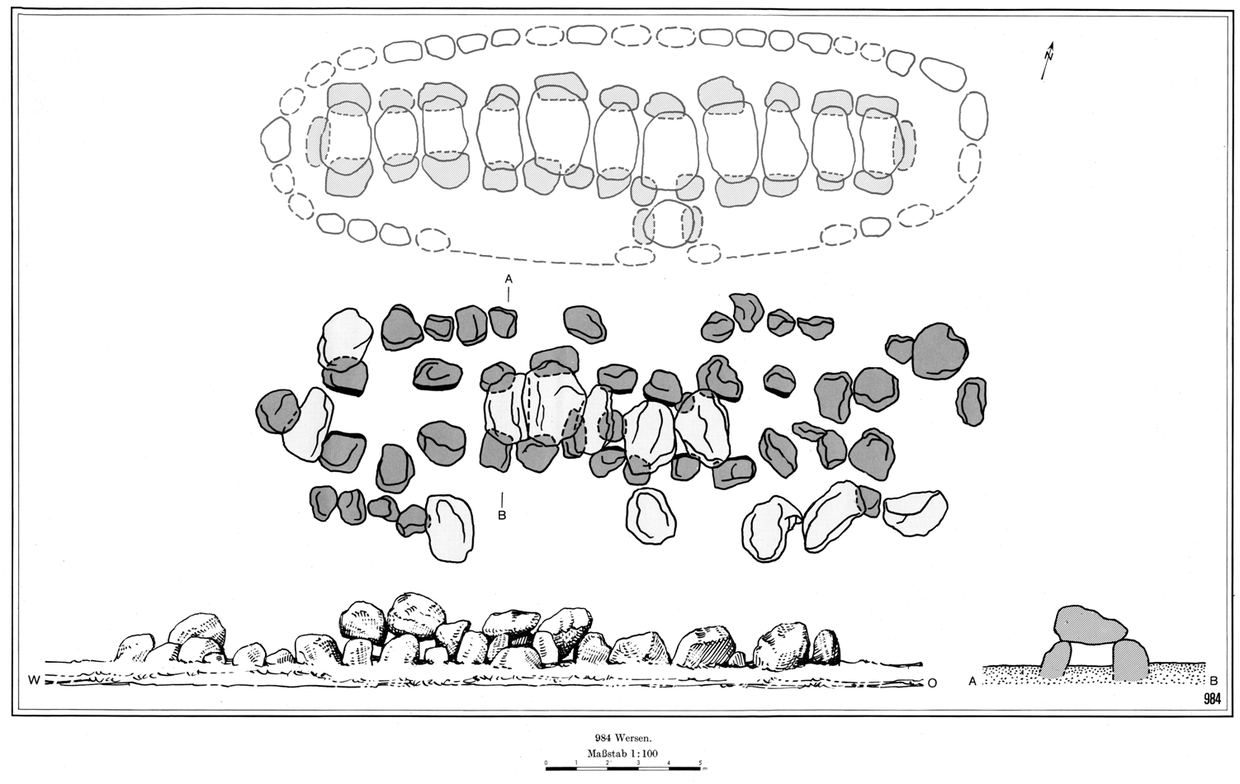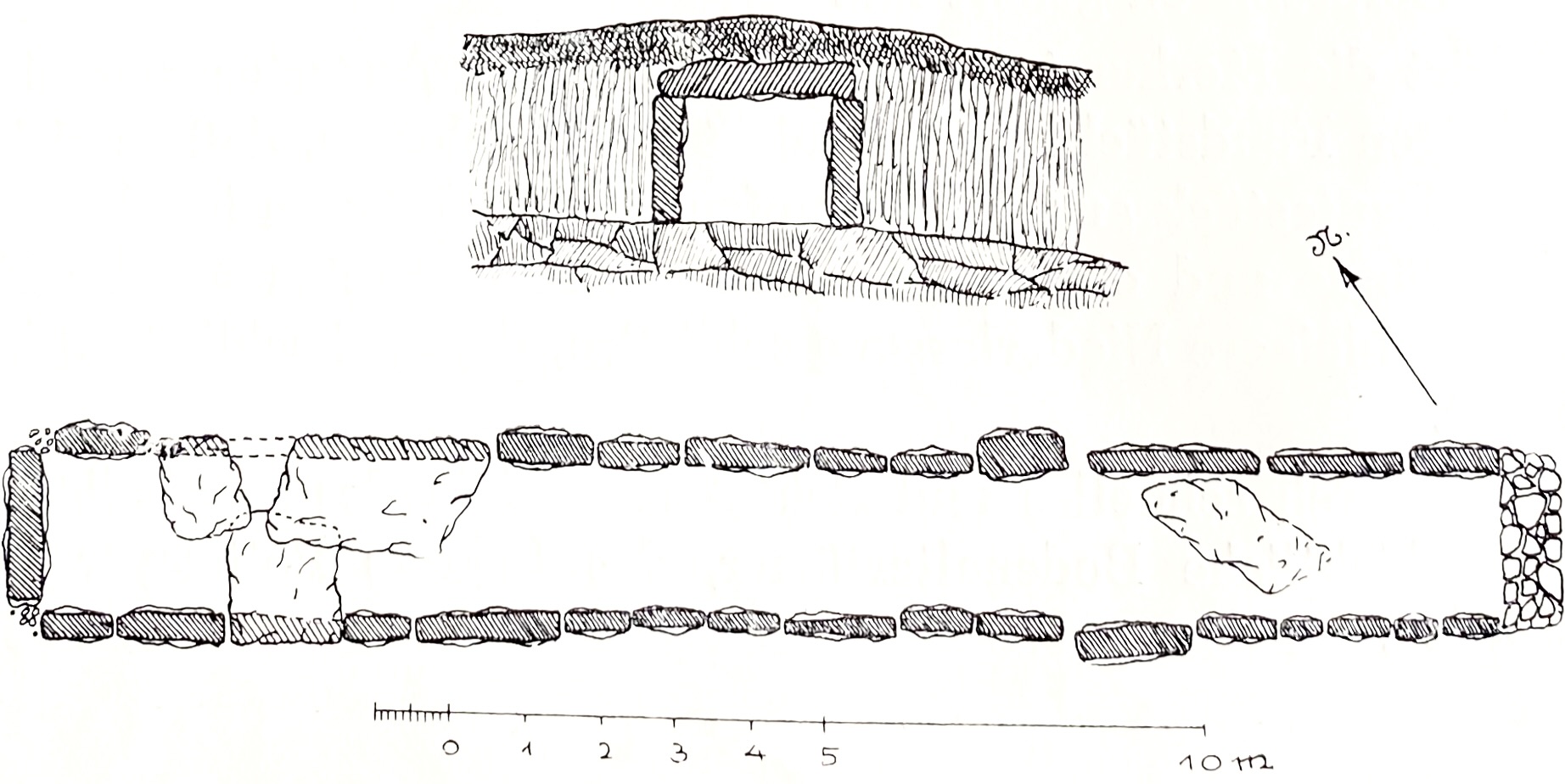
Westphalia can be described as a "megalithic stroke of luck", as two cultures, the Funnel Beaker Culture and the Wartberg Culture, which differ greatly in terms of grave construction and burial customs, meet here in a small area. Especially the building materials and orientations of the Funnel Beaker and the Wartberg Culture are very different. The Düwelsteene are also part of the "Weg der großen Steine" (road of the big stones), which connects Westphalia to the European Cultural Route "Megalithic Routes".
One of the latest research focus of the Altertumskommission für Westfalen (Antiquities Commission) is on late Neolithic megalithic graves, the oldest surviving architectural remains in Westphalia. The project has set itself the task of scientifically recording and researching this unique group of monuments in Westphalia and then presenting them to the public using modern methods.
Northern and western Westphalia: Passage graves of the Funnel Beaker Culture
Southern and eastern Westphalia: Gallery graves of the Wartberg culture

Passage grave: Sloopsteene (Sprockhoff 1975)

Gallery grave: Atteln 1 (Stieren 1929)
The level of archaeological knowledge about the individual graves varies greatly, but many of the sites are firmly anchored in the cultural memory of their region, for example through legends or as part of current hiking trails. On the basis of scientific research, this potential is to be used to integrate the megaliths as stations on the "Weg der großen Steine" into the European Cultural Route "Megalithic Routes", which was created in 2013.